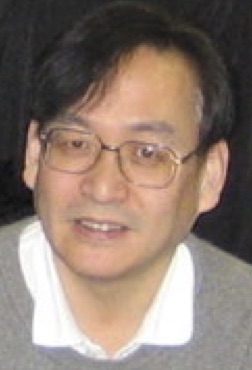Org. Synth. 2017, 94, 93-108
DOI: 10.15227/orgsyn.094.0093
(Z)-Enol p-Tosylate Derived from Methyl Acetoacetate: A Useful Cross-coupling Partner for the Synthesis of Methyl (Z)-3-Phenyl (or Aryl)-2-butenoate
Submitted by Yuichiro Ashida, Hidefumi Nakatsuji,* and Yoo Tanabe*
Checked by Yuji Suzuki and Keisuke Suzuki
1. Procedure
A. (Z)-3-(p-Toluenesulfonyloxy)but-2-enoate [(Z)-1]. A 500-mL, three-necked, round-bottomed flask attached to a CaCl2 drying tube, capped with a glass stopper, and fitted with a thermometer and a Teflon-coated magnetic stirring bar (Note 1) is charged with methyl 3-oxobutanoate (methyl acetoacetate) (17.41 g, 150 mmol, 1.0 equiv) (Note 2) and EtOAc (150 mL). To this stirred mixture, LiCl (7.63 g, 180 mmol, 1.2 equiv) (Note 3) is added in one portion via a glass funnel. TMEDA (26.8 mL, 180 mmol, 1.2 equiv) (Note 4) is then added dropwise over 2 min to the suspension by temporarily removing the glass stopper.
The vigorously stirred white-colored suspension is immersed in an ice-cooling bath, and
p-toluenesulfonyl (tosyl) chloride (
TsCl) (34.31 g, 180 mmol, 1.2 equiv) (
Note 5) is added portion wise (3 portions) through a glass funnel over 10‒15 min by temporarily removing the glass stopper, for each addition, while maintaining the inner temperature below 10 °C (
Note 6) (Figure 1). The suspension becomes a well-dispersed white slurry (Figure 2) after ca. 10 min of the addition of
TsCl.
Figure 1. Addition of p-Toluenesulfonyl Chloride
Figure 2. Appearance of Reaction Mixture after Addition of Reagents
The reaction mixture is stirred for 1 h at ~5 °C, and
water (75 mL) is added by temporarily removing the glass stopper to the resulting mixture over ca. 1 min while maintaining the internal temperature below 15 °C. The suspension immediately turns into a biphasic solution (Figure 3).
Figure 3. Biphasic Solution
The mixture is transferred into a 500-mL separatory funnel, and the flask is rinsed twice with EtOAc (2 x 10 mL), which is added to the separatory funnel. The organic phase is separated and the aqueous phase is re-extracted with EtOAc (50 mL). The combined organic phases are washed with aqueous 1 M HCl (75 mL) and brine (75 mL), dried over Na2SO4 (75 g), filtered, and concentrated under reduced pressure using a rotary evaporator (15-20 mmHg), (bath temperature, ca. 40‒45 °C) to remove the EtOAc completely.
The slightly orange-colored oil solidifies after a few min (
Note 7) (Figure 4). The crude solid in a 100 mL round-bottomed flask is crushed into particles, which is transferred to a 200 mL round-bottom flask fitted with a Teflon-coated magnetic stir bar using
2-propanol (40 mL) (
Note 8). The solid is completely dissolved with heating by an oil bath at 50 °C. The solution is allowed to cool to room temperature. The resulting solid is collected using a glass funnel and washed twice with
2-propanol (2 x 40 mL) to yield 29.78-31.21 g (74-77%, ≥98% ds) of the desired product
(Z)-1 as white prisms (
Note 9) (Figure 5).
Figure 4. Solidified Product (Photo Provided by Submitters)
Figure 5. Recrystallized Product
B. Methyl (Z)-3-phenyl-2-butenoate [(Z)-2]. A 300-mL, three-necked, round-bottomed flask is equipped with a nitrogen stopcock inlet, capped with a glass stopper, equipped with a thermometer, and a Teflon-coated magnetic stirring bar (Note 10). The flask is flushed with nitrogen, and while kept under a continuous nitrogen flow, is charged with 2-propanol (75 mL) and water (25 mL) (Note 11).
The stirred suspension is immersed in a temperature-controlled water bath and (Z)-enol tosylate [(Z)-1] (13.52 g, 50.0 mmol, 1.0 equiv), PhB(OH)2 (6.40 g, 52.5 mmol, 1.05 equiv) (Note 12), and K2CO3 (7.26 g, 52.5 mmol, 1.05 equiv) (Note 13) are successively added, each in one portion via paper funnel after temporarily removing the glass stopper. The reaction mixture is warmed to 30‒35 °C (internal temperature) with vigorous stirring. Triphenylphosphine (262 mg, 1.0 mmol) (Note 14) and Pd(OAc)2 (112 mg, 0.5 mmol) (Note 15) are then successively added to the mixture, each in one portion after temporarily removing the glass stopper while maintaining the inner temperature below 40 °C. Once the additions is complete the reaction is stirred for 1 h (Note 16).
The reaction mixture is cooled to room temperature and water (50 mL) is added, which is filtered through a funnel (60 mm diameter) with 10 g of Celite® pad washing with EtOAc (100 mL). The filtrate is transferred into a 300-mL separatory funnel [the flask is rinsed twice with EtOAc (10 x 2 mL)]. The organic phase is separated and the aqueous phase is re-extracted with EtOAc (50 mL). The organic phases are combined and washed with aqueous 1 M NaOH (50 mL) and brine (50 mL), dried over Na2SO4 (50 g), filtered, and concentrated under reduced pressure using a rotary evaporator (15-20 mmHg), (bath temperature, ca. 40‒45 °C).
The black-colored oil (8.75 g) is transferred into a 20-mL round-bottomed flask using
EtOAc (2 mL), into which a Teflon-coated magnetic stir bar is placed. Distillation while immersed in a temperature-controlled oil bath under reduced pressure using a vacuum pump (75-77 °C/0.75 mmHg) gives the desired product
(Z)-2 (5.10-6.94 g, 58-80% yield, ≥98% ds) as a colorless oil (Notes
17 and
18) (Figure 6).
Figure 6. Distillation Apparatus for Step B
2. Notes
1. A magnetic stirring bar (for example, egg-shaped, 45 mm length x 20 mm diameter) was used, since the reaction mixture produces a large quantity of salts. The white slurry is smoothly stirred throughout the reaction.
2.
Methyl 3-oxobutanoate (
methyl acetoacetate) (GC purity 99.0%) was purchased from Tokyo Chemical Industry Co., Ltd. and used as received (checkers and submitters).
3.
Lithium chloride (
LiCl) (99.0%) was purchased from KANTO CHEMICAL Co., Inc. (checkers).
Lithium chloride (
LiCl) (99.0%) anhydrous was purchased from Wako Pure Chemical Industries, Ltd. and used as received (submitters).
4.
N,N,N',N'-Tetramethylethylenediamine (
TMEDA) (>98.0%) was purchased from Tokyo Chemical Industry Co., Ltd. and used as received (checkers and submitters).
5.
p-Toluenesulfonyl (tosyl) chloride (
TsCl) (>99.0%) was purchased from Tokyo Chemical Industry Co., Ltd. and used as received; a fresh lot was used (checkers and submitters).
6. The reaction is exothermic with production of salts.
7. Usually, the compound solidified immediately when it is left.
8.
2-Propanol (>99.7%, GLC) was purchased from Wako Pure Chemical Industries, Ltd. and used as received.
9. Stable solids can be stored in a brown-colored bottle at room temperature over months. Physical and spectroscopic properties of
(Z)-1: white prisms; mp 66.2-67.9 °C; [lit.
Org. Lett. 2008,
10, 2131], 62.0-63.0 ˚C];
1H NMR
pdf(600 MHz, CDCl
3) δ: 2.14 (3H, s), 2.46 (3H, s), 3.58 (3H, s), 5.50 (1H, s), 7.36 (2H, d,
J = 8.4 Hz), 7.91 (2H, d,
J = 8.4 Hz);
13C NMR
pdf(150 MHz, CDCl
3) δ: 21.7, 51.3, 110.3, 128.3, 129.7, 133.4, 145.4, 156.5, 163.2. IR cm
-1) 3070, 2954, 1731, 1673, 1487, 1370, 1206. HRMS (ESI) calcd for C
12H
14O
5S (M+Na
+) 293.0454, found 293.0465. Anal. calcd for C
12H
14O
5S: C, 53.32; H, 5.22; S, 11.86. Found; C, 53.06; H, 5.10; S, 11.72.
10. The reaction mixture produces a large quantity of salts. A magnetic stirring bar (egg-shaped, 45 mm length x 20 mm diameter) is used in order to ensure the reaction is stirrable at all times.
11. Distilled
water was used.
12.
Phenylboronic acid [
PhB(OH)2] was purchased from Wako Pure Chemical Industries, Ltd. and used as received (checkers and submitters).
13.
Potassium carbonate (
K2CO3) (fine powder, >99.5%) was purchased from KANTO CHEMICAL Co., Inc. (checkers) and Wako Pure Chemical Industries, Ltd. (submitters), and used as received.
14.
Triphenylphosphine (
PPh3) (>95.0%) was purchased from Tokyo Chemical Industry Co., Ltd. and used as received (checkers and submitters).
15.
Palladium acetate [
Pd(OAc)2] (>97.0%) was purchased from Wako Pure Chemical Industries, Ltd. and used as received (checkers and submitters).
16. The reaction is slight exothermic reaction with production of salts.
17. Careful manipulation is required before and during the distillation because bumping occurs so easily. This is particularly the case during the removal of solvent from the crude oil under reduced pressure.
18. Physical and spectroscopic properties of
(Z)-2:
1H NMR
pdf(600 MHz, CDCl
3) δ: 2.18 (3H, d,
J = 1.2 Hz), 3.55 (3H, s), 5.92 (1H, d,
J = 1.2 Hz) 7.18-7.22 (2H, m), 7.29-7.37 (3H, m);
13C NMR
pdf(150 MHz, CDCl
3) δ: 27.1, 50.8, 117.0, 126.7, 127.7, 127.8, 140.5, 155.8, 166.1; IR (cm
-1) 2949, 1730, 1640, 1441, 1374, 1231, 1165; HRMS (ESI) calcd for C
11H
12O
2 (M+Na
+) 199.0730, found 199.0724. The purity of (
Z)-
2 was determined to be 97% based on quantitative
1H NMR with ethylene carbonate as the internal reference.
Working with Hazardous Chemicals
The procedures in
Organic Syntheses are intended for use only by persons with proper training in experimental organic chemistry. All hazardous materials should be handled using the standard procedures for work with chemicals described in references such as "Prudent Practices in the Laboratory" (The National Academies Press, Washington, D.C., 2011; the full text can be accessed free of charge at
http://www.nap.edu/catalog.php?record_id=12654). All chemical waste should be disposed of in accordance with local regulations. For general guidelines for the management of chemical waste, see Chapter 8 of Prudent Practices.
In some articles in Organic Syntheses, chemical-specific hazards are highlighted in red "Caution Notes" within a procedure. It is important to recognize that the absence of a caution note does not imply that no significant hazards are associated with the chemicals involved in that procedure. Prior to performing a reaction, a thorough risk assessment should be carried out that includes a review of the potential hazards associated with each chemical and experimental operation on the scale that is planned for the procedure. Guidelines for carrying out a risk assessment and for analyzing the hazards associated with chemicals can be found in Chapter 4 of Prudent Practices.
The procedures described in Organic Syntheses are provided as published and are conducted at one's own risk. Organic Syntheses, Inc., its Editors, and its Board of Directors do not warrant or guarantee the safety of individuals using these procedures and hereby disclaim any liability for any injuries or damages claimed to have resulted from or related in any way to the procedures herein.
3. Discussion
Stereocontrolled preparation of ubiquitous (E)- and (Z)-α,β-unsaturated esters is pivotal in organic synthesis, because these important compounds serve as useful structural scaffolds for various (E)- and (Z)-stereodefined olefins, conjugate (Michael) addition acceptors, and catalytic asymmetric hydrogenation substrates. Methyl (Z)-3-aryl-2-butenoates [methyl (Z)-β-methylcinnamates] [aryl = Ph; (Z)-2] have a simple structure, but are promising synthetic building blocks for various stereodefined alkenes. Despite the high demand, (Z)-stereoselective synthetic methods are quite limited compared with those for (E)-isomers, due to the inherent stability of (E)-cinnamate esters. Here we present a practical, accessible, and robust synthesis of (Z)-2 and its aryl analogues, including stereocomplementary (E)-isomers.
The relevant reported methods for the synthesis of
(Z)-2 are as follows. Utilization of Horner-Wadsworth-Emmons (HWE) reactions between acetophenone and elaborate HWE reagents is regarded as the most straightforward method. A literature survey revealed two methods producing high (
Z)-stereoselectivity. One is a Sn(OTf)
2 (Tf = SO
2CF
3)/
N-ethylpiperidine-mediated reaction using Still-Gennari's HWE reagent
3 with acetophenone to afford 84% yield,
E/
Z = 2:98 ratio, which was developed by Sano and Nagao's group (Scheme 1).
3 Another noteworthy example developed by Kojima's group
4 is the reaction using (1-naphthoxy)
2PCH
2CO
2Et HWE reagent
4 with acetophenone using NaH to afford 80% yield,
E/
Z = 9:91, although it requires conditions of 0 °C for 48 h.
These one-step methods produce high yields with good to excellent
E/
Z-ratios, but a couple of the reagents [
3 and Sn(OTf)
2] are expensive and reagent
4 is not commercially available. Other HWE-conducted methods result in moderate to low yield and/or low
E/
Z-selectivity. On the whole, these approaches suffer from a lack of the atom-economy due to use of the specific phosphonate reagents. In addition, the yield and
E/
Z-selectivity using other aryl methyl ketone acceptors apparently depends on the nature of the employed ketones.
Scheme 1. Two Representative Methods Utilizing the Horner-Wadsworth-Emmons (HWE) Reaction
Iron-catalyzed cross-coupling of Grignard reagents with an enol triflate of methyl or ethyl acetoacetate (
Z)-
5 was developed by Fürstner's group (Scheme 2).
5,6,7 The preparation of (
Z)-
5 utilizes triflic anhydride (Tf
2O) and NaH (Method A). This excellent method is the most relevant for our strategy. A major drawback is that Tf
2O is ca. 15-30 times more expensive than
TsCl. In addition, Tf
2O is highly toxic and hazardous with a low boiling point (81-83 °C) and reacts violently with
water. Enol triflate (
Z)-
5 is an oil, but its stability to distillation purification is unclear and only flash column chromatography is used for its purification. A practical preparative method for (
Z)-
5, developed by Frantz's group (Method B) also requires flash column chromatographic purification.
8 This iron-catalyzed cross-coupling requires 1.8 equiv of PhMgBr at low temperature (‒30 °C).
Scheme 2. Method Utilizing Iron-catalyzed Cross-coupling of Enol Triflate (Z)-5
Other syntheses of
(Z)-2 are listed in chronological order. (i) Dianion of 1-(1,2,4-triazolo-1-yl)phenylpropargyl ethyl ether, treated with MeI gave
(Z)-2 in 87% yield with
E/
Z = 1:4 selectivity (Katritzky's group).
9 (ii) MeReO
3 (5 mol%)-catalyzed condensation between ethyl diazoacetate and acetophenone in the presence of an equimolar amount of
PPh3 gave
(Z)-2 in 65% yield with
E/
Z = 13:87 selectivity (Kühn's group).
10 (iii) TMSOTf (equimolar amount)-promoted carbocupration of PhMgBr/CuI•2LiCl with a relatively expensive ethyl 2-butynoate gave
(Z)-2 in 88% yield with
E / Z = 1:5 selectivity (Jennings and Mueller).
11Compared with the above-mentioned methods, the present approach utilizing Suzuki-Miyaura (SM) cross-coupling with enol tosylate
(Z)-1 (≥98% ds) produced
methyl (Z)-3-phenyl-2-butenoate (Z)-2 and its aryl analogues in high yields with excellent (
Z)-stereoretention (≥98% ds) in a consistent substrate-general manner and functional group compatibility (vide infra).
(Z)-1 is an easy-to-handle stable solid that can be stored neat without detectable decomposition at ambient temperature. The original preparative method
2 of
(Z)-1 utilizes LiOH/
N-methylimidazole reagent in C
6H
5Cl or CH
2Cl
2 solvent, which was replaced with
EtOAc as the solvent for LiCl/TMEDA. This improvement significantly increases the scalability with accessible reaction temperature (0‒40 °C), short reaction periods (1 h), and easy operations for all of the procedures.
In general, although the enol triflates exhibit higher reactivity than the enol tosylates, (Z)-1 is sufficient for the synthesis of (Z)-2 and its aryl analogues as a robust, productive, and considerably inexpensive SM cross-coupling partner. The reaction proceeded smoothly under mild conditions with nearly perfect (Z)-stereoretention. The present combination of Pd(OAc)2/PPh3 is the most accessible and cost-effective catalysis among a myriad of SM cross-couplings. The loading quantity of Pd(OAc)2 catalyst and PPh3 ligand were decreased to 1 mol% and 2 mol%, respectively. A simple work-up and isolation procedure eliminating column chromatographic purification can be partially attributed to this feature. As an additional advantage, environmentally benign solvents, such as EtOAc, 2-propanol, and H2O, can be employed for both of two reaction steps and the corresponding extraction (work-up) steps throughout the procedure.
On the other hand, stereocomplementary isomer (
E)-
1, an oil compound, is readily prepared from the same
methyl acetoacetate with
E/
Z = 96:4 (crude product) using a different reagent, TsCl/Et
3N/
N-methylimidazole.
12 Due to the different Rf values [(
E)-
1: 0.36,
(Z)-1: 0.21 (hexane/AcOEt = 5:1)], column chromatographic purification of the crude product was easily performed to give (
E)-
1 in 86% yield (≥98% ds). A variety of the relevant (
Z)- and (
E)-enol tosylates derived from other β-ketosters,
11 α-formyl esters,
12,13 and α,α-diaryl or a,β-diaryl β-ketoesters
14 can be almost readily prepared by similar approaches. We speculate that this stereocomplementary method proceeds through a Li-chelation pathway for
(Z)-1, whereas non-chelation pathway for (
E)-
1.
2,14Under the identical conditions, three ArB(OH)
2 and (3-pyridyl)B(OH)
2 also underwent the present SM cross-coupling to afford the corresponding analogues (Z)-
6,
7,
8, and
9 with similarly good to excellent yields and nearly perfect
Z-stereoretention (Scheme 3). Naphthalene analog (
Z)-
6 is a known compound, but its synthesis results in poor yield (58%) and
E/
Z selectivity (79:21).
15 The other analogues, (
Z)-
7,
8, and
9, are new compounds distinct from the known compounds (
E)-
7,
8, and
9, demonstrating the poor accessibility of (
Z)-compounds to date. Noteworthy is the compatibility of labile functional groups such as Br- and -CHO groups, which are susceptible to other cross-couplings and organometal-mediated methods. The reaction of heterocyclic 3-pyridyl compound (
Z)-
9 was conducted using Pd(dppf)Cl
2 catalyst instead of Pd(OAc)
2/PPh
3.
14 Suzuki-Miyaura cross-coupling exhibits superb and reliable stereoretention control in the related synthesis of amino acid derivatives using β-ketoester-derived enol tosylates.
16,17
Scheme 3. Suzuki-Miyaura (SM) Cross-coupling giving Methyl (Z)-3-Aryl-2-butenoates (Z)-6, 7, 8, and 9
As depicted in Scheme 4,
(Z)-1 as well as (
E)-
1 can also serve as the Negishi and Sonogashira cross-couplings partners,
2 wherein a high and reliable level of
E,
Z-stereoretention (each ≥98% ds) is guaranteed. (
E)-
2 type compounds are a representative probe for asymmetric hydrogenation to produce important chiral 3-arylbutanoates.
18,19,20 The relevant investigation using
(Z)-2 and its analogues is, however, hitherto not reported certainly due to the fatal lack of practical supply of these precursors.
After finishing the present work, we published relevant additional progress on the stereocomplementary parallel syntheses of fully-substituted α,β-unsaturated esters.
21,22,23,24 Applications for the parallel syntheses of (
E)- and (
Z)-zimelidines
14 and tamoxifens, representative probes for the stereodefined multi-substituted alkenes, were performed.
23In conclusion, the present practical and user-friendly synthetic protocol of
(Z)-1 along with the related analogue for the useful synthetic building blocks, provides a new promising avenue for synthetic organic chemistry. This strategy will contribute to the construction of a library for (
E)-and (
Z)-stereodefined α,β-unsaturated esters.
Scheme 4. (E)- and (Z)-Stereocomplementary Negishi and Sonogashira Cross-couplings using (E)-1 and (Z)-1 Partners.
Appendix
Chemical Abstracts Nomenclature (Registry Number)
Methyl 3-oxobutanoate (105-45-3)
p-Toluenesulfonyl chloride (TsCl) (98-59-9)
N,N,N',N'-Tetramethylethylenediamine (TMEDA) (110-18-9)
Lithium chloride (LiCl) (7447-41-8)
Phenylboronic acid (PhB(OH)2) (98-80-6)
Palladium(II) acetate (Pd(OAc)2) (3375-31-3)
Triphenylphosphine (PPh3) (603-35-0)
Potassium carbonate (K2CO3) (584-08-7)

|
Yuichiro Ashida was born in Fukuchiyama, Kyoto, Japan, in 1989. He received his B.S. degree (2012), and M.S. degree (2014) from Kwansei Gakuin University under the direction of Professor Yoo Tanabe. Presently, he is a doctor course student and engages in his doctoral studies on the development of (E)-, (Z)-stereocomplementary parallel synthesis of multi-substituted α,β-unsaturated esters utilizing (E)- or (Z)-stereodefined enol tosylates and phosphonates, which are directed for process chemistry. |

|
Hidefumi Nakatsuji received his B.S. degree (2005) and his Ph. D. degree (2010) from Kwansei Gakuin University under the direction of Professor Yoo Tanabe. Immediately, Dr. Nakatsuji moved to Nagoya University (Professor Kazuaki Ishihara's group) and studied as JSPS Postdoctoral Fellowship and CREST project researcher until 2014. He was then promoted to Assistant Professor of Yoo Tanabe's group. His research interests are the development of chiral phosphine and phosphine oxide organocatalysts for a MCR-type cyclization reactions and condensation reactions for cost-effective methods directed for process chemistry. |

|
Yoo Tanabe received his bachelor's degree at Tokyo in the laboratory of Professor Kenji Mori. He received his Ph. D. at Tokyo Inst. Technology under the direction of Professor Teruaki Mukaiyama on the development of practical acylation reactions. After leaving Sumitomo Chemical Co. Ltd, Dr. Tanabe moved to Kwansei Gakuin University in 1991 as Associate Professor and promoted to Professor in 1997. In 1996-1997, he studied at University of Groningen (The Netherlands) under the direction of Professors Richard M. Kellogg and Ben L. Feringa on chiral sulfur chemistry. His research focuses on the exploitation of useful synthetic reactions directed for process chemistry: concise synthesis of useful fine chemicals and of total synthesis of biologically active natural products. |

|
Yuji Suzuki was born in Tokyo, Japan in 1992. He received his B. S. degree in 2016 at Tokyo Institute of Technology under the direction of Prof. Keisuke Suzuki. Presently, he is pursuing graduate studies directed towards a Masters degree. |
Copyright © 1921-, Organic Syntheses, Inc. All Rights Reserved